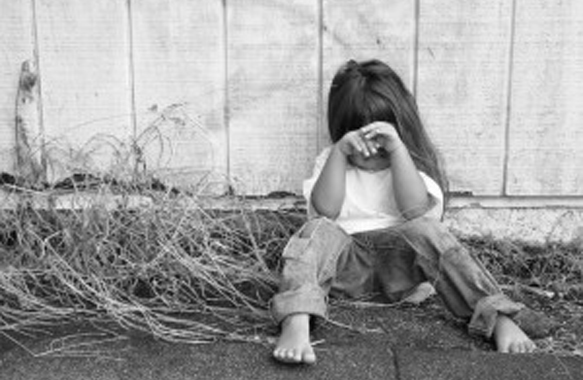By Greg Kaufmann | The Poverty Line, What Matters Today | Originally Published at BillMoyers.com September 27, 2013
We’re proud to collaborate with The Nation in sharing insightful journalism related to income inequality in America. The following post appeared first in Nation contributor Greg Kaufmann’s “This Week in Poverty” blog.

(AP Photo/Ricardo Arduengo)
The annual release of the US Census poverty data is the one day you can be sure the mainstream media will turn their attention to poverty. This year was no exception when Poverty Day arrived last Tuesday. Amidst the frenzy of coverage of the new data, here are five things you may have missed:
1) A Crisis for Children of Color Under Age 5
Melissa Boteach, director of Half in Ten, a campaign to cut poverty in half in ten years, notes “crisis levels of poverty” for children of color under age 5, including more than 42 percent of African-American children and 37 percent of Latino children living below the poverty line. The Children’s Defense Fund also highlighted disturbing statistics across the nation regarding poverty levels of children of color under age 6.
Boteach points out that toxic stress associated with persistent poverty affects brain development in children, and leads to adverse outcomes in education, health and worker productivity when those children reach adulthood. We also know that modest investments in young children can offset some of those negative effects, but we currently are moving in the opposite direction.
Boteach references a new report from First Focus — a bipartisan organization that advocates for investments in children and families — which finds that “in 2013 alone, sequestration will cut $4.2 billion of funding for children concentrated in the areas of education, early learning and housing, and Congress is considering a budget plan that would lock in or deepen these cuts for next year.” The report also finds that federal spending on children decreased last year by $28 billion, or 7 percent — the largest reduction since the early 1980s. Early education and childcare saw a particularly deep cut of 12 percent, and housing was cut by 6 percent.
“These data could not be timelier,” writes Boteach. “They show structural threats to our economic competitiveness owing to high rates of poverty among young children of color — who would be badly hurt by Congress locking in or deepening the sequester cuts.”
2) We Could End Child Poverty
Austin Nichols, senior research associate at Urban Institute, writes that a monthly benefit for every child is “now common across developed countries, with amounts of about $140 a month in the UK, $190 in Ireland, $130 in Japan, $160 in Sweden and $250 in Germany.” He suggests that a monthly benefit of $400 for every child in the US would cut child poverty by more than half.
“If we issued a $400 monthly payment to each child, and cut tax subsidies for children in higher-income families, we would cut child poverty from 22 percent to below 10 percent,” writes Nichols. “If we further guaranteed one worker per family a job paying $15,000 a year, and each family participated, child poverty would drop to under 1 percent.”
Nichols suggests that even a $150 per month child benefit would lower child poverty from 22 percent to below 17 percent; and adding the job guarantee would reduce child poverty to 8 percent.
While Nichols is aware that there is no chance for this kind of change at the federal level, he writes that “a few states could try out a new taxable child benefit paid to all families.”
3) Poverty’s Gender Gap and the Safety Net
Tim Casey, senior staff attorney at Legal Momentum, the nation’s oldest organization that advocates on behalf of the legal rights of women and girls, reports that women were 32 percent more likely to be poor than men, and had a poverty rate of 14.5 percent compared to 11 percent for men.
“About one of every seven women was poor, compared to about one of every nine men. Single mothers were 81 percent more likely to be poor than single fathers, aged women were 67 percent more likely to be poor than aged men and employed women were 31 percent more likely to be poor than employed men,” writes Casey. “At every level of educational attainment women were substantially more likely to be poor than men.”
Elizabeth Grayer, president of Legal Momentum said that the “high poverty rate” and a “continuing gender poverty gap” point to “the need for a social safety net that is accessible and adequate.” She urges Congress to reject any food stamp cuts that would increase hunger and hardship, and to “enact sorely needed improvements in the Temporary Assistance to Needy Families (TANF)
Currently, for every 100 families living in poverty, approximately 27 receive TANF cash assistance; down from 68 in 1996.
4) Vicious Cycle of Long-Term Unemployment and Poverty
The Urban Institute’s Nichols and Zach McDade, research associate, note that “4.2 million Americans — 37 percent of the unemployed — have been jobless for longer than six months,” the highest rate “by far” in the last sixty years.
Nichols and McDade suggest that the “relationship between growing long-term unemployment and poverty runs both ways, where poverty can reinforce joblessness just like joblessness can increase poverty.”
“The longer one is unemployed, the harder it is to find work,” they write. “Skills erode, professional networks deteriorate, and workers become tainted by a perception of ‘unemployability.’ Long-term unemployment begets longer-term unemployment. Throw poverty into the picture and it’s only worse. Long-term unemployed workers are much more likely to be poor. Poverty makes it more difficult to travel to interviews, pay for child care, or care for one’s health, making the job hunt all the harder.”
Nichols and McDade argue that the cycle can be broken with “some simple policy prescriptions.” “Workforce development programs generally benefit workers with little education and experience (those who are most likely to be long-term unemployed).” They also call for “large-scale public works programs” that “help workers retain their skills, avoid the stigma of long-term unemployment and provide a regular income.”
5) Missed Opportunity: Unemployment Insurance and Poverty
Arloc Sherman, senior researcher at the Center on Budget and Policy Priorities, says that one significant reason the poverty rate didn’t decline over the last two years is that “we pulled back too quickly on unemployment insurance (UI).”
“Poverty would have fallen from 2010 to 2012 had it not been for the shrinking antipoverty role of unemployment insurance,” he told me.
UI kept 1.7 million people above the official poverty line in 2012, down nearly half from the 3.2 million who were lifted above the poverty line in 2010. Sherman notes that UI benefits used to reach 67 workers for every 100 unemployed workers; now it’s just 48 for every 100.
“The poverty rate would have declined significantly, by about half a percentage point — and there would be a million fewer poor people today — if UI’s effect per unemployed person hadn’t weakened since 2010,” he said.
Greg Kaufmann is the poverty correspondent for The Nation and a contributor to BillMoyers.com. His work has also been featured on Moyers & Company, MSNBC’s Melissa Harris-Perry show, NPR, CBSNews.com, WashingtonPost.com, Common Dreams and Alternet. He serves as an adviser for the Economic Hardship Reporting Project.












Leave A Comment